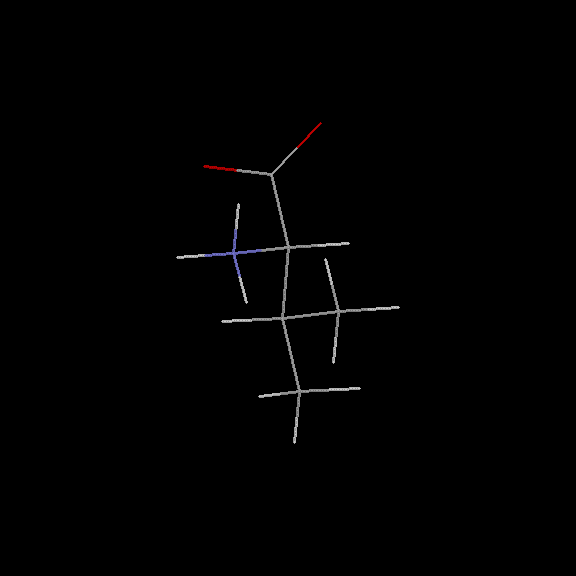L-valine
Valine: Essential Amino Acid with Critical Biological Significance
Valine, an α-amino acid denoted by the IUPAC-IUBMB abbreviation Val and incorporated as one of the 22 proteinogenic amino acids, holds a prominent position among the nine amino acids deemed essential for human health. Its distinctive features include an apolar isopropyl group, rendering it crucial for various physiological functions and metabolic pathways.
The etymology of its name stems from its identification in the valerian plant, reflecting its natural occurrence and widespread distribution. The molecular structure of valine showcases a lateral chain characterized by a branched and symmetric aliphatic nature, contributing significantly to its functional versatility within the cellular environment.
Encoded on mRNA by the GUU, GUC, GUA, and GUG codons, valine plays a crucial role in the regulation of essential biological processes, including muscle metabolism, tissue repair, and overall growth. Its involvement in protein synthesis, energy production, and the maintenance of nitrogen balance underscores its indispensable role in sustaining optimal human health and well-being.
Furthermore, recent research has highlighted the intricate role of valine in the context of various metabolic disorders, emphasizing its significance as a potential therapeutic target for the management of specific health conditions. Ongoing investigations continue to illuminate the multifaceted contributions of valine, reinforcing its status as a pivotal component in the realm of human physiology and biochemistry.
Accession Number : KLM0000406 This work is released into the public domain; please see our release statement.

Synonyms :
- L-VALINE
- Val
- V
Config Rule :
config('L-valine',[
substituent(aminoacid_L_backbone),
substituent('propa-beta-yl'),
linkage(from(aminoacid_L_backbone,car(1)),
to('propa-beta-yl',car(1)),
down,single)]).
%%%% Substituent Config Rules for compound 'L-valine' %%%%
config(aminoacid_L_backbone,[
left(amino),
right(hyd),
top(carboxyl),
center(car(1))]).
config('propa-beta-yl',[
center(car(1)),
left(methyl),
right(hyd),
bottom(methyl)]).
Smiles String :
[C@2H]([NH3+])([C](=[O])[O-])[C@2H]([CH3])[CH3] 'L-valine'
Fischer Diagram :

Terminal :
% 'L-valine'
c(1,12,(0,chiral))-[n(1,left)~,h(1,right)~,c(2,up)~,c(3,down)~],
c(2,12,(0,nonchiral))-[o(1,nil)?,o(2,nil)?,c(1,down)~],
c(3,12,(0,nonchiral))-[c(4,left)~,h(5,right)~,c(1,up)~,c(5,down)~],
c(4,12,(0,nonchiral))-[h(6,left)~,c(3,right)~,h(7,up)~,h(8,down)~],
c(5,12,(0,nonchiral))-[h(9,left)~,h(11,right)~,c(3,up)~,h(10,down)~],
h(1,1,(0,nonchiral))-[c(1,left)~],
h(2,1,(0,nonchiral))-[n(1,right)~],
h(3,1,(0,nonchiral))-[n(1,down)~],
h(4,1,(0,nonchiral))-[n(1,up)~],
h(5,1,(0,nonchiral))-[c(3,left)~],
h(6,1,(0,nonchiral))-[c(4,right)~],
h(7,1,(0,nonchiral))-[c(4,down)~],
h(8,1,(0,nonchiral))-[c(4,up)~],
h(9,1,(0,nonchiral))-[c(5,right)~],
h(10,1,(0,nonchiral))-[c(5,up)~],
h(11,1,(0,nonchiral))-[c(5,left)~],
n(1,14,(1,nonchiral))-[h(2,left)~,c(1,right)~,h(3,up)~,h(4,down)~],
o(1,16,(-5.0E-01,nonchiral))-[c(2,nil)?],
o(2,16,(-5.0E-01,nonchiral))-[c(2,nil)?]
The Terminals for all the Config Rules are in Prolog Definite Clause Grammar (DCG) form.They can be checked in the Manual here.
The compound's PDB file can be seen here.
